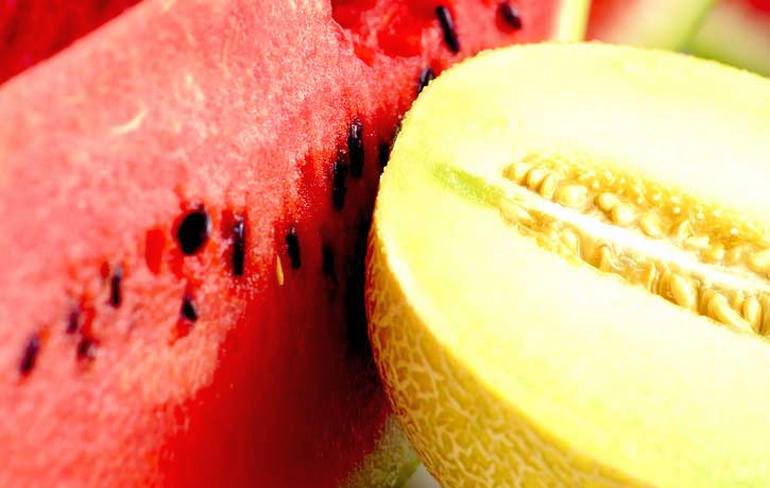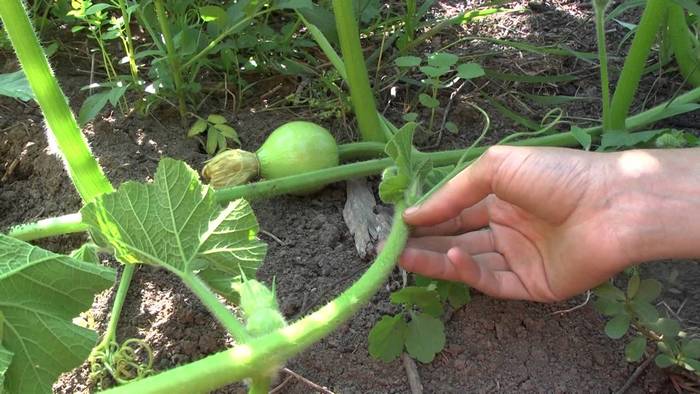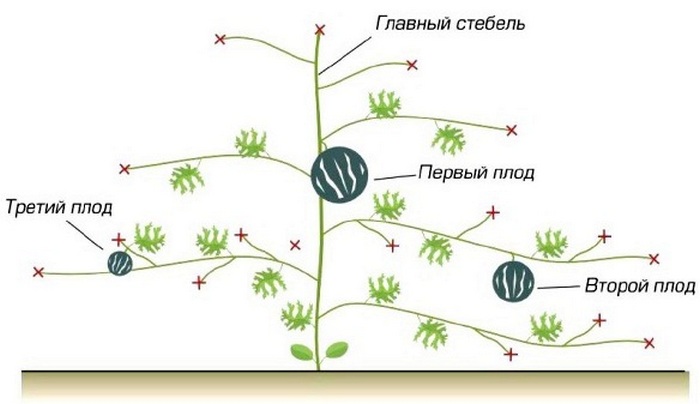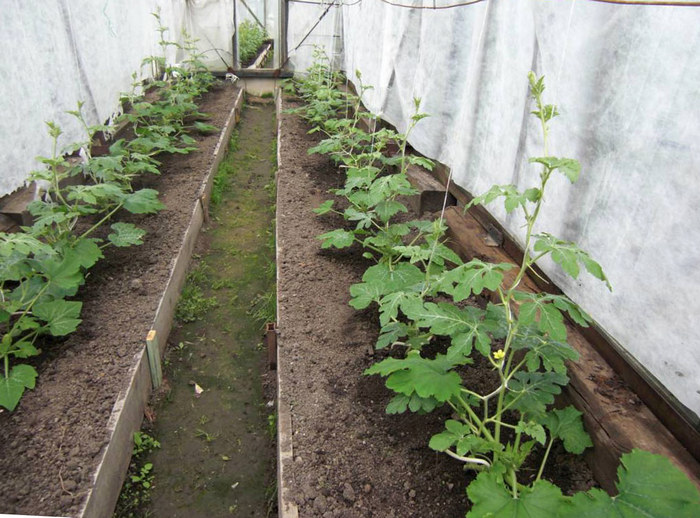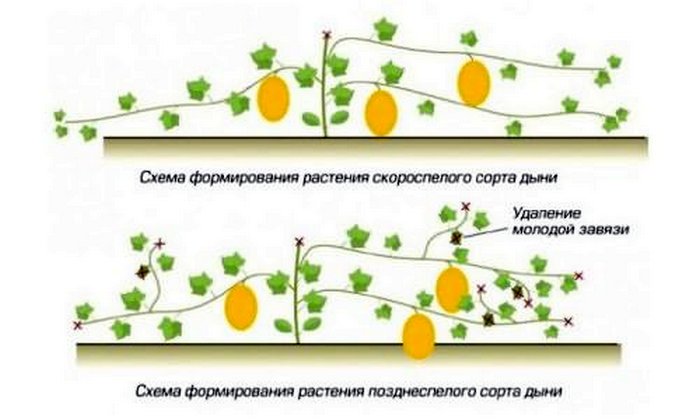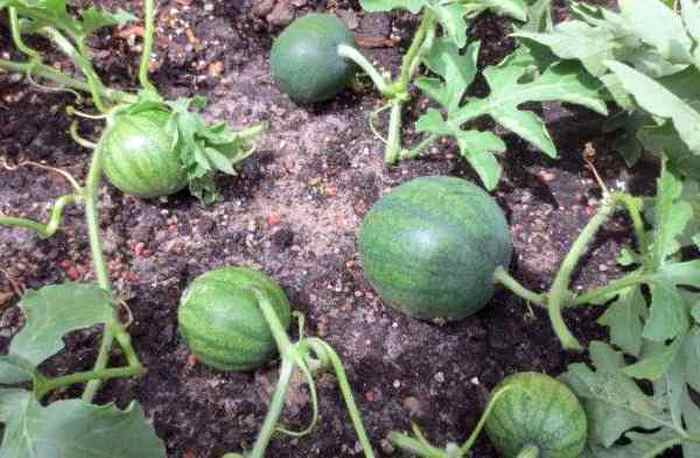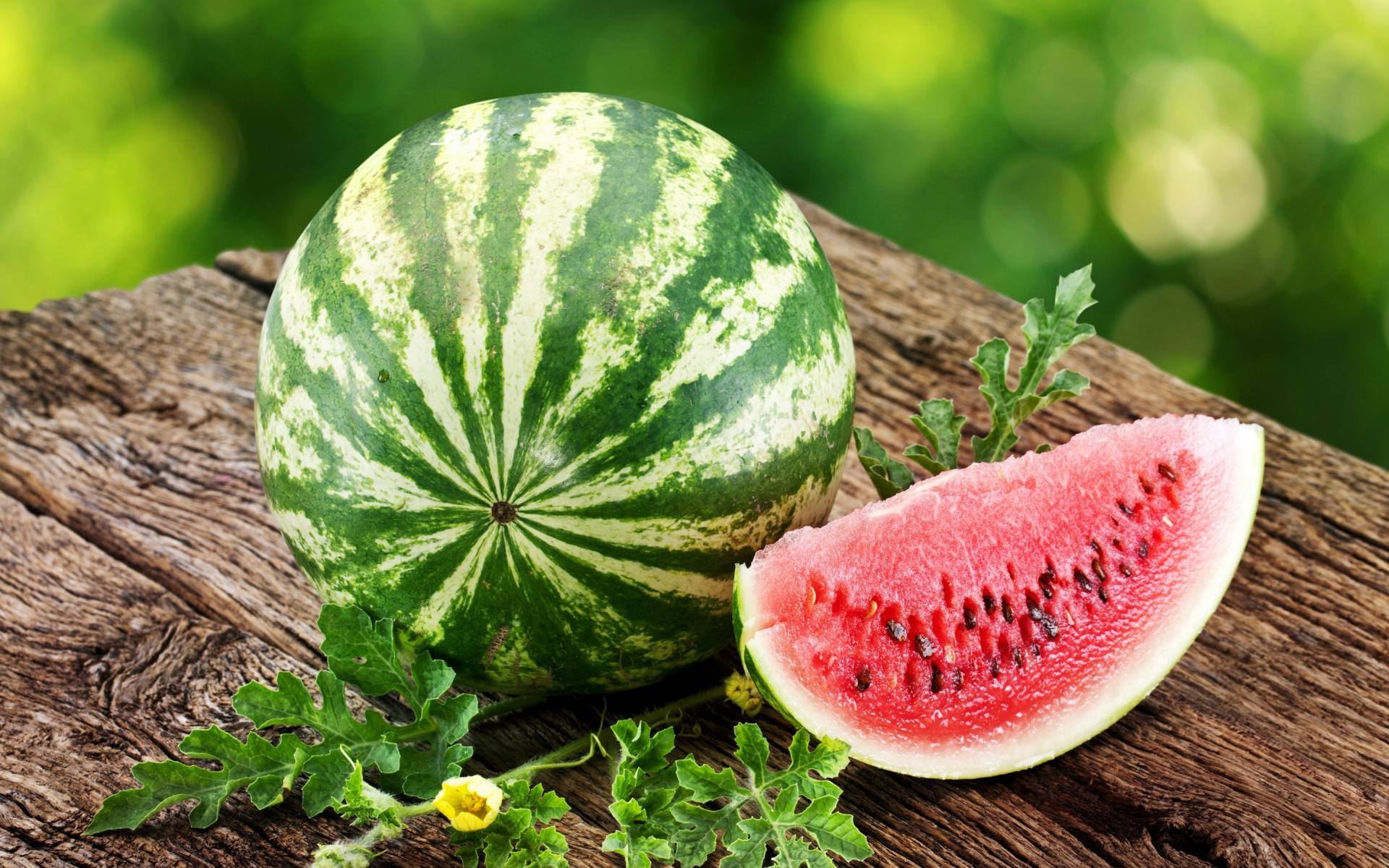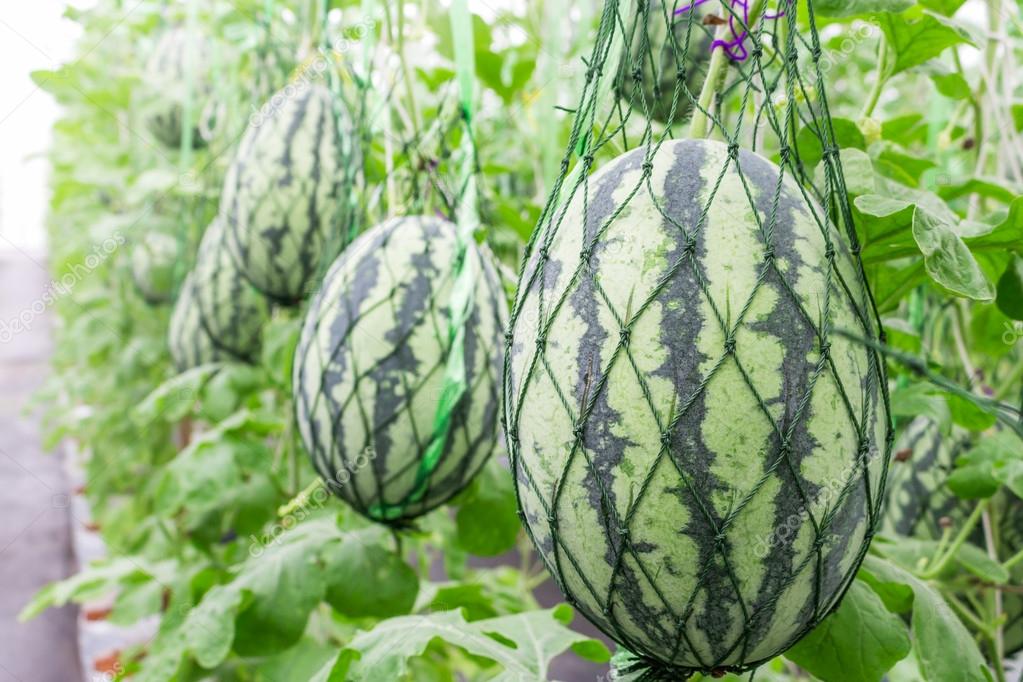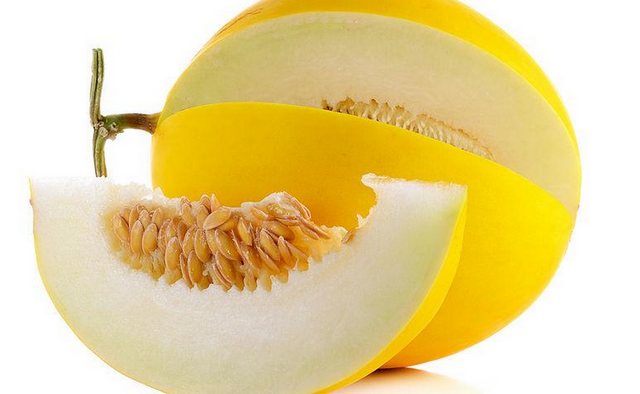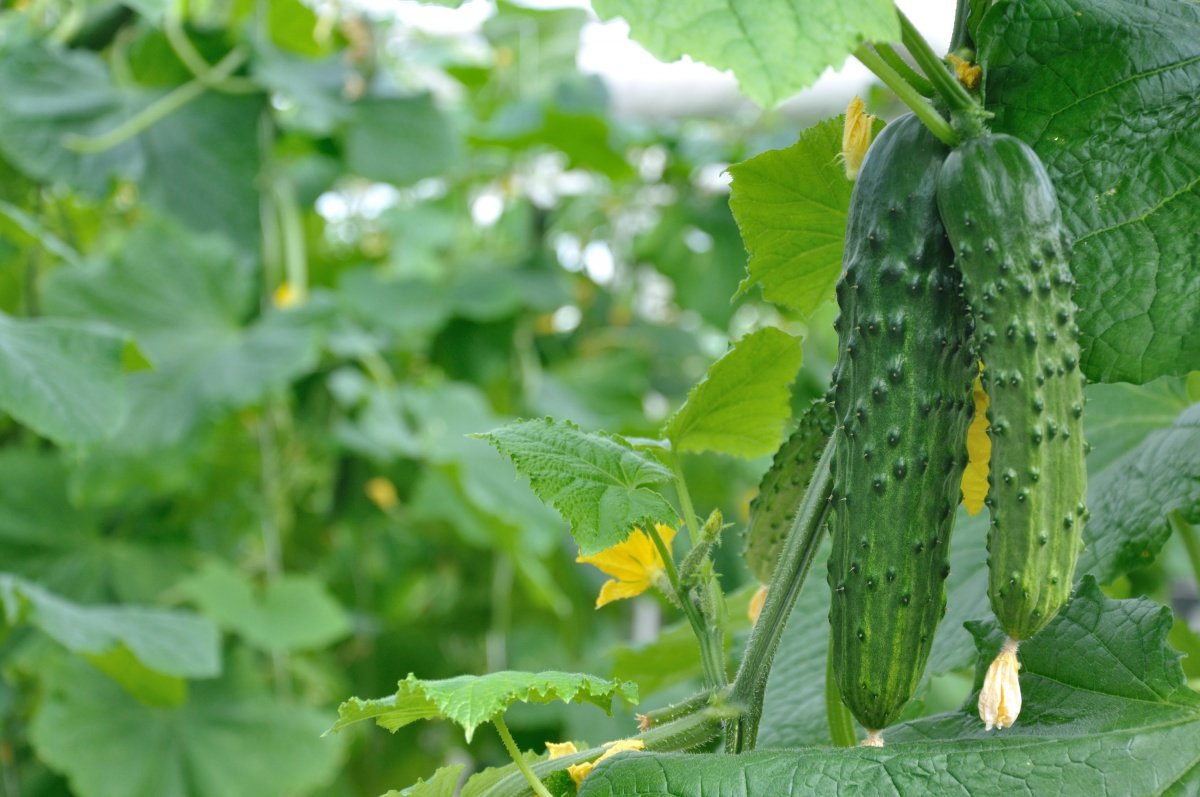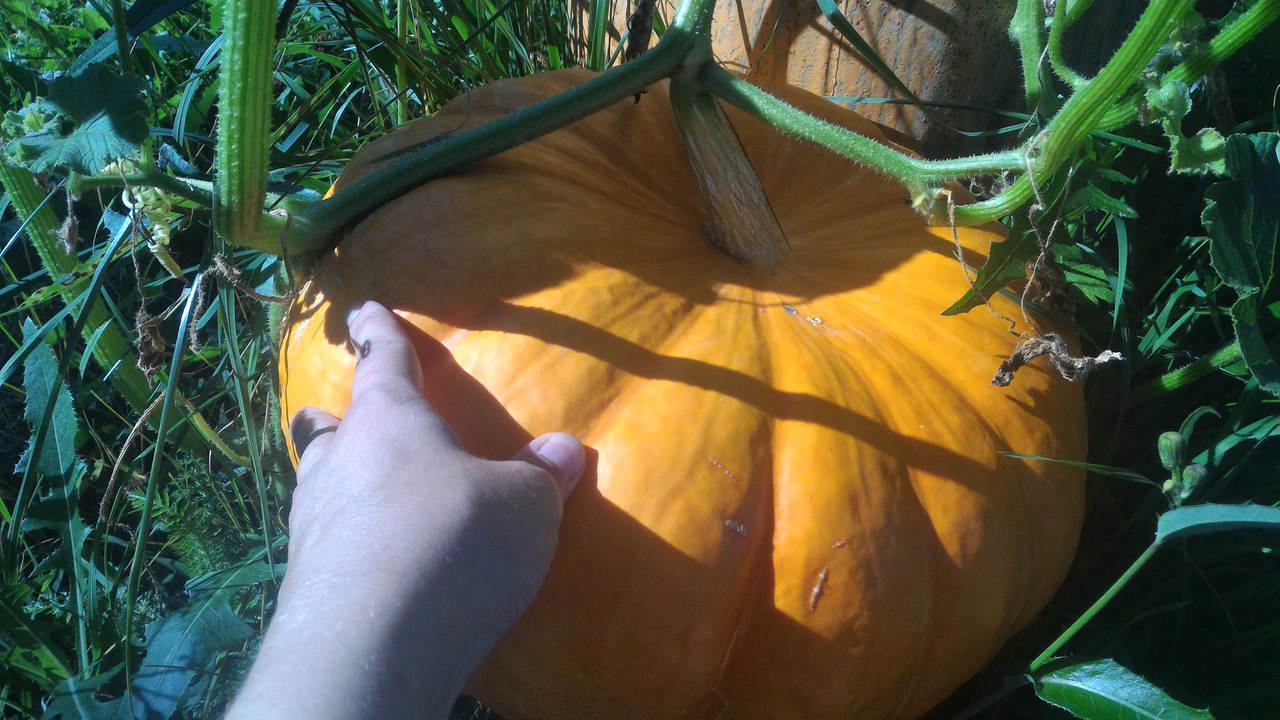Content:
It is possible to grow in sufficient quantities such thermophilic berries as melons and watermelons in most Russian regions, not only in the south, they are also cultivated in Siberia. Cultivation of watermelons and melons in the middle lane is associated with the risk of frost and other unfavorable factors, in order to grow a good harvest, experience and knowledge of agricultural techniques are required.
Growing watermelons and melons
Watermelons and melons belong to the melon family. It is possible to grow them in the neighborhood, but you should not plant them too close, they are prone to the same diseases and can infect each other.
The creation of new varieties of melons that ripen earlier, the improvement of the technology of their cultivation allow getting ripe fruits in cool regions, subject to some cultivation techniques.
- When selecting varieties of planting material should be consideredthat in regions that do not belong to the southern and black earth regions, one can count on getting ripe berries of only medium-sized, early ripening varieties. The main characteristic when choosing seeds for planting is the time required for fruit ripening.
- It is possible to achieve a harvest in the zone of risky agriculture and in the south of Siberia when grown without a greenhouse only when seedling method of planting plants.
- Seeds are planted no later than 60 days before the planned transfer on the land allotted for melon, preference should be given to hybrid, early ripening varieties of melons.
- For sowing don't use seeds from last year's harvest, they either will not sprout, or the crop will be small and tasteless, 2- or 3-year-old seeds should be used.
- Sveta in the end of April enough for germinating seeds, there is no need to additionally illuminate the seedlings.
When 3 to 5 leaves appear on the seedlings, the plants can be transferred to a site prepared in advance for planting.
About 7-8 days before planting, the plants should be hardened, the temperature should be maintained at 15 degrees during the day, about 12 at night, and the room should be often ventilated.
It is recommended to plant seedlings at the end of the month of May, when a stable high temperature is established. If there is a threat of frost, plants planted under the open sky should be covered with a film. Seedlings should be planted in pits at a distance of a meter or more from each other, about 2 kg of humus should be placed in the pits first and watered generously with warm water.
Pinching seedlings and forming bushes
The growth of watermelon lashes can continue as long as it is warm and there is enough moisture, while many ovaries and side shoots will form. With a short warm season in the regions of the Russian central zone, they will not be able to ripen or there will be many small and tasteless berries. When growing seedlings, it is necessary to cut off the tops of the main stems so that the tops do not grow too high and the forces of the plants are directed to the ripening of the berries.
There are three main schemes for forming a bush:
- with one lash;
- two;
- three lashes.
How to pinch watermelons and melons depends on the climatic characteristics of the area and the variety of berries, as well as the method of cultivation: in a greenhouse or open land.
How to form watermelons in open ground also depends on the area of the land plot; for large sizes, they manage with the simplest technologies, for example, pinch the tops to limit growth only once, when 5-6 leaves appear.
Pinching of watermelons is done when berry ovaries appear, remove all excess leaves.
How many ovaries should be left on the watermelon
On the lashes, 2-3 leaves should be left, and the lashes without ovaries should be removed completely. The left lashes are laid out at a distance from the neighboring ones, so that they do not come into contact and do not get confused with neighboring shoots. After the berries reach the size of a small apple, the weakest shoots should be removed and 3-4 fruits should be left on the left stems.
For areas with a short growing season, it is recommended to use a pinching scheme for watermelons and melons, which will ensure the formation of an ovary on third-order stems. As a result of scientific research, it was determined that the berries grow faster than others on stems belonging to third-order shoots.
How to pinch watermelons in areas with moderately cool summers:
- When the fifth leaf appears on the watermelon, cut off the shoot after the third leaf.
- When secondary stems appear from the sinuses, two of them are left, docked above the fifth leaf, the third shoot is cut off. On the left secondary lashes, stems are formed belonging to the third order, where the ovaries are formed.
Pinching in the greenhouse
Seedlings can be planted in the greenhouse earlier, in early May. Seedling care is the same as when planting in open ground, you only need to periodically ventilate the greenhouse, if the plants are not pollinated by insects, artificial pollination should be provided.
Watermelon
A week and a half after planting the seedlings, the watermelons are tied up.
Lateral shoots, on which there is an ovary, pinch at a distance of 2-3 sheets from it. The main shoot is also pinched when it reaches the trellis. You need to understand that many watermelons on the lash will not ripen, their sizes will be small. Therefore, when the fruits reach the size of a chicken egg, no more than 3 fruits are left on the whip, the rest are removed without pity.
Melons
After the first pinching of the seedlings, the melon forms several lateral shoots, one or two of the most developed ones are selected from them, each is tied up and grown as the main lashes. When they grow to the trellis, they pinch. The number of fruits that should be left is no more than 3 per whip.
Cropping the tops in the case of growing in a greenhouse can be omitted; this procedure is done in places with a short warm season. With a warm, long summer - in the south, in the black earth - you can do without it.
People's councils for the formation of watermelons
In Altai, a simple method of forming a watermelon is used: one shoot and one ovary is left, side shoots, flowers and ovaries are removed, the main whip is cut off, leaving 5-6 leaves. The result is one large watermelon.
The method of pinching watermelons is used, when the main whip and two stepsons are allowed to grow. They grow in the axils of the third and fourth leaves.Leave one ovary on the lashes. The harvest under this scheme is 3 watermelons of the desired ripeness, pleasant taste and the right size.
When grown in mid-latitudes, it is especially important to form a bush correctly, there are three main ways:
- If the variety is large-fruited, no more than 3 berries are left on the main stem, if the variety is small, up to 6 ovaries. Fruits are removed from the side shoots, 4 leaves are left, the rest are removed.
- The second method is to remove the side shoots, leave the required number of fruits on the main lash and 5 leaves, the rest is removed.
- It is precisely the lateral shoots where the berries grow, and the entire ovary is removed from the main shoot. When inflorescences appear on the bush, leave up to 6 ovaries.
When deciding how to pinch watermelons, you need to take into account the climatic features of the region and the method of cultivation. There is no universal technology; in the absence of experience, it is better to try out simple technologies for the correct formation of a bush. You can also experiment to find out the best ways to form a bush and ration the number of fruits in regions with a short warm season.
